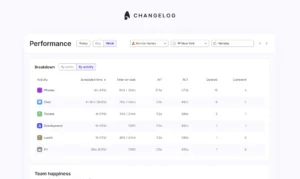
Why is team collaboration so important in customer support?

If you’ve ever worked in customer support, you know how it feels when a customer asks you a question on the phone that you don’t know the answer to. Ideally, you asked a colleague or team lead the answer and they knew. But sometimes it’s not that simple and the customer needs an answer right away, or the closest team member to you doesn’t know the answer either. Ten seconds can feel like ten hours as they wait on hold, while you in turn wait for the answer. All very stressful stuff.
If you don’t know what this feels like, you can count yourself lucky. The vast majority of surfers (that’s what we call customer support agents) will be able to recall a memory like this. It will usually happen to a surfer when they first start in a new support team, by virtue of the fact that they’re less experienced with their new company and the products and/or services they provide.
Team collaboration in customer support is where two or more surfers work together to solve customer problems. It might be similar to the example given above, where two surfers will work together, or a team lead will help with a specific problem. Or, it could be much more complex. If a customer has a very complicated problem, it might take collaboration from multiple different team members, departments, and levels of expertise to solve it.
There are many ways to encourage and implement team collaboration in customer support teams, and it’s not just the responsibility of the support team manager. Both surfers and team leaders need to play their part if a team is going to work collaboratively on customer problems.
Below, we talk about the benefits of team collaboration, and how it can be implemented into a support team environment.
Benefits of team collaboration in customer support
Reduces stress
Remember that story form the beginning of this post? I think we can agree that this is not the ideal situation for a surfer to find themselves in. One of the immediate benefits of setting teams up in a way that they can collaboratively solve problems and work together is that it greatly reduces the stress they will feel in their role. Surfers are generally happier when they can work on difficult problems together, and come up with solutions as a team.
Saves time
Surfers that work in unison as a team are, naturally, more productive than a team of individuals working independently of one another. Teamwork makes the dream work and all that. A lot of companies, particularly in the workforce management software industry, espouse how their software saves managers and teams lots of time. Which is great. But they rarely speak about why that’s important (maybe because they don’t why it’s important). The time that teams save as a result of working collaboratively can be valuable in a variety of ways.
Team leaders can train and develop their team, help with them with particularly difficult customer problems, or plan ahead to figure out how to further improve customer satisfaction. For surfers, this enables them to spend more time working on customer problems, training, knowledge sharing, and learning and development.
Improved customer satisfaction
This ones a no-brainer. When agents are empowered to collaborate with their teams to solve customer problems more quickly and effectively, it has an obvious knock-on effect on the customer experience provided. To put it plainly, collaborative support teams provide better customer experience. Improved satisfaction passes the benefits from customers to surfers, teams, managers, departments, and even entire companies.
How to implement customer support team collaboration
Be the voice of the customer
Customer support teams are often thought of as monolithic entities that only exist to support customers and little else. In an ideal world, support teams should work both ways, supporting customers externally, and being the voice of the customer internally.
For support teams, achieving this internal status as the voice of the customer only comes about when teams work in a collaborative setting to represent the customer. For organisations who want their support teams to exist as profit centres, support teams need to act on behalf of the customer towards engineering, product, and commercial teams.
Integrate cross-departmental teams
Not only should support teams encourage collaboration within the team itself, but from a wider organisational view, cross-departmental collaboration should be fostered in the same way.
If you have read our eBook about scaling customer support teams, you’ve probably read about the value of embedding product and engineering teams into customer support. The level of embeddedness will vary depending on the type of organisation. Technology businesses like Sufboard will have a closer link between product and support.
Regardless of the type of business however, any team that impacts the overall customer experience should work closely with customer support. Customer support never sits in isolation and should always be thought of in the context of the broader customer experience.
Empower surfers
In order to fully own problems and solve them effectively, surfers need to be empowered to do so. This a lot easier said than done, of course. A lot of support teams still focus on one-dimensional success factors like average handling time (AHT) or first call resolution. As a result, giving surfers the autonomy to own a customer problem from start to finish is often difficult for teams that are structured in this way. The concept of team collaboration is built on the assumption that a support team is focused on solving customer problems and looks at holistic, qualitative support metrics rather than focusing purely on stats.
Customer support team collaboration not only benefits surfers, team leaders and managers, but the wider organisation too, and of course, the customer.
If you enjoyed this blog and would like to see more of our content, go ahead and subscribe to our monthly newsletter, or get in touch with us using the form below.



